[Best_Wordpress_Gallery id=”340″ gal_title=”Natalie Wright”]
Squinting her eyes in concentration, Natalie Wright ponders her biggest fear. She fidgets with the glass contact she just got to help correct her lazy eye.
“I’m still getting used to this,” she said, pointing to the contact. “I just got it yesterday.”
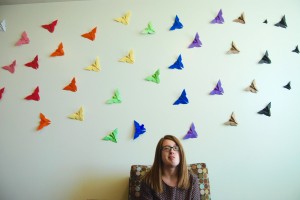
Natalie sits in her Heritage Hall dorm room worrying about homework, boys and what to wear tomorrow. She seems just like any other 18-year-old freshman. But as she tucks her hair behind one ear, Natalie reveals a partially paralyzed face, damaged from years of painful surgeries.
“What’s my biggest fear?” she said. “At some points, I was scared that my tumor would come back. But that doesn’t define me every day. I don’t know. I’m really scared of bugs.”
Diagnosed with a brain tumor at age 2, Natalie Wright defied the odds and predictions for her quality of life. Happily enjoying her first year of college at BYU, Natalie has begun her journey of living for herself, despite the benign tumor sitting at the base of her brain stem.
“I don’t really know everything about me, which is kind of weird,” Natalie said. “I learn something new about me every week.”
Discovery and battle: a family matter
Natalie’s parents, John and Dana Wright, have been heavily involved with Natalie’s battle against her brain tumor since her diagnosis. Her father John exceeded the natural concern of a parent and made it a priority to research and find new treatment plans.
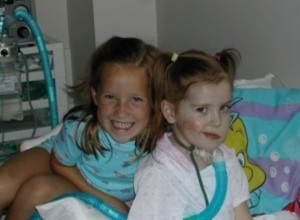
Though she may not have been first place on the track team or the first child to reach the playground, Natalie has had plenty of “firsts.” From his daughter being the first patient using 3-D imaging at age 2 to the first pediatric patient using image-guided surgery at age 4 to one of the first patients testing out different chemotherapy programs, John has had his hand in researching and creating Natalie’s unique treatment path.
After two brain surgeries, Natalie’s brain tumor still remained but at a much smaller size. The second surgery left her with nerve damage on the left side of her face, which affected her ability to swallow and required a tracheotomy and a feeding tube so she could breathe and eat for four years.
The Wrights fought for Natalie to come home and recover, believing she would thrive better at home, but struggled with the balance of all of their other responsibilities.
Neighbor Jim Lindahl intervened and asked if their LDS ward and the rest of the neighborhood could step in and help. Hesitant to accept help, the Wrights said they would think about it.
“The next night, I will never forget,” Dana said with tears in her eyes. “I looked out the window and there were 50 cars on our lane at the Lindahl’s house. He was having a meeting, and I said, ‘This is the only way we’re going to make it,’ and to this day, I still believe that Natalie is blessed because of that.”
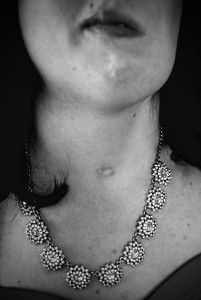
Neighbors and ward members volunteered their time for almost nine months, giving the Wrights a chance to spend time with their other children and take a break from the 24-hour surveillance that Natalie’s condition required.
After her second brain surgery at age 4 left her without the ability to swallow, the doctors told Natalie it would never return. Miraculously, four years later she regained her swallowing function just in time for her to be baptized into the LDS church.
Natalie said the day she could swallow again was one of the happiest days of her life. She celebrated by eating an entire carton of ice cream.
“I felt so sick after,” Natalie said, “but I was so happy.”
“At her baptism, the whole room was crying,” Dana said. “We didn’t know if she would make it to that day.”
In 2007, Natalie underwent her third brain surgery. With the surgery a success, Natalie began reconstructive surgeries: two to help her smile nerve, and 10 or more to help with her eye. In 2014, Natalie bypassed her fourth brain surgery to become the first pediatric patient to undergo a new proton therapy her father had been tracking for 15 years.
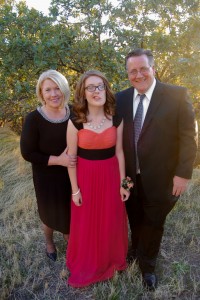
The Wrights said after Natalie’s last radiation treatment, in a best case scenario, the tumor would stay the same size for the rest of her life. The worst case scenario is that it grows back fast. A medium scenario would be it growing back slowly enough that she can have more treatments.
Enduring an uphill climb
Natalie gathers her books from her dorm room to attend her full load of college courses. Once a kindergartener who entered her first school day with tubes attached to her and a full-time nurse running around her, the now freshman hurries to her 10 a.m. class without assistance. She is working toward becoming a child life specialist.
Despite doctors telling Natalie she would never ride a bike again — or even swallow, walk or talk again — Natalie entered BYU as a freshman in September 2015.
“I can ride a bike now,” Natalie said. “I think I kind of proved them wrong.”
Moving Natalie in to a dorm full of roommates not familiar with her situation was intimidating for the Wrights.
Casey McClellan, Natalie’s roommate, said Natalie has to stand up and explain her condition whenever she meets new people.
“I feel bad she has to do that,” McClellan said. “She’ll always say, ‘Just in case you guys are wondering, I have a brain tumor; it’s cool, don’t worry about it,’ and everyone is like ‘Oh.'”
McClellan said Natalie is super happy, even though many people judge others based solely off appearances.
“I think when you have something that’s really different about you, it’s kind of hard for people to look past that,” McClellan said. “But she makes it work because she’s just so nice, so herself, so grounded.”
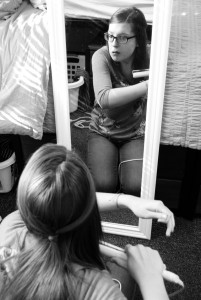
Natalie’s family and friends say that despite the misconceptions blown her way, Natalie has more to offer than one may think.
“Along with the way I look, some people think that I have some mental problems,” Natalie said. “I don’t, so I try to make that as clear as possible when it comes up.”
Natalie initially seems quiet, a little shy, despite her winning smile. But she embraces her opportunity to attend BYU with a confident, positive outlook.
“I have always been ‘little Natalie in a protective bubble’ all my life,” Natalie said. “So I really love it here at BYU. I’ve realized that my parents have kind of been my agent; they tell everyone and that is how everybody knows. They know everything and I have known all the stories from them. So coming here, I’ve realized some of my best friends don’t even know my story and some of my family members don’t know it from me.”
Natalie said it was good that her childhood was sheltered and protected.
“I needed that because of my situation,” she said.
But she enjoys the independence that college, even homework, brings.
“Realizing I want to be here, my life is now my choice and my decision,” she said. “Telling my story to everybody and all of that new stuff is interesting; it makes me realize that everybody has stories to tell.”




